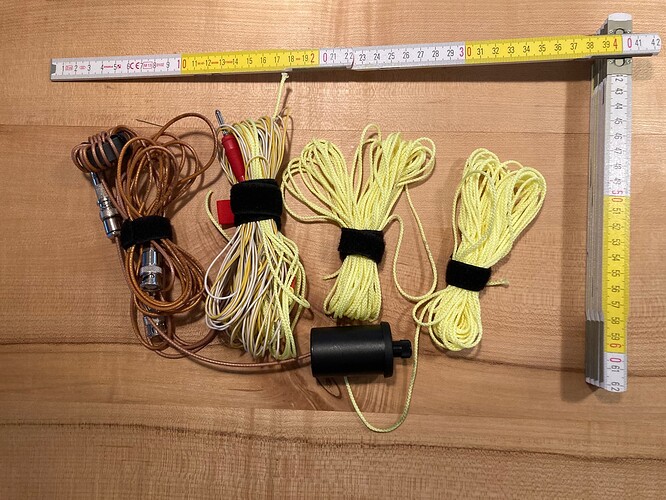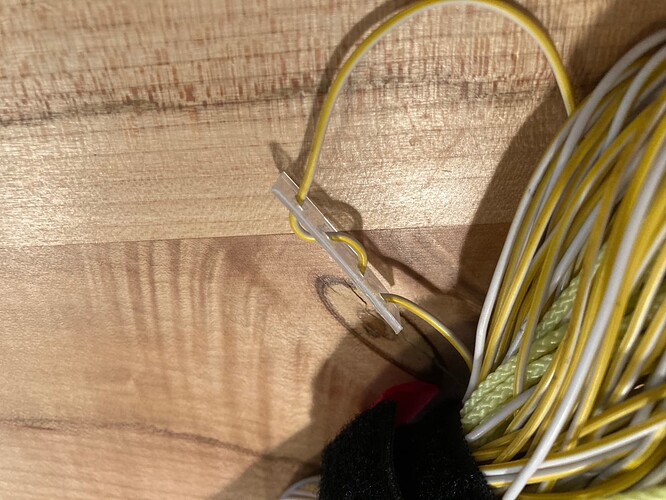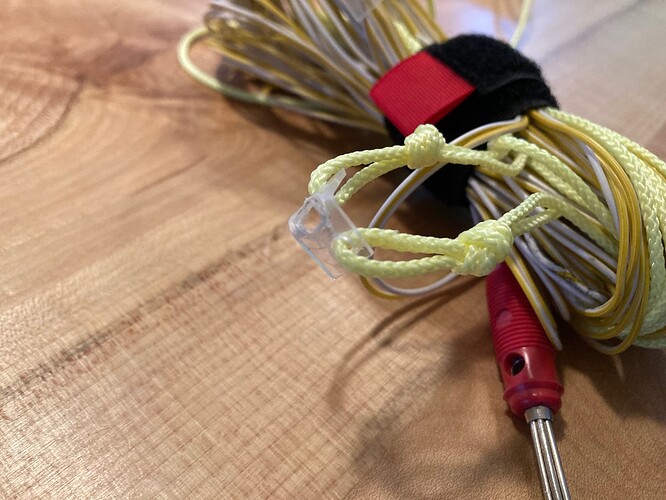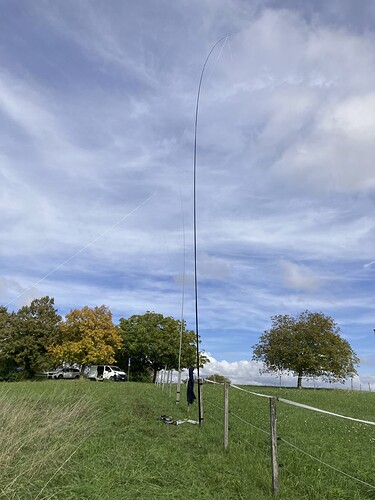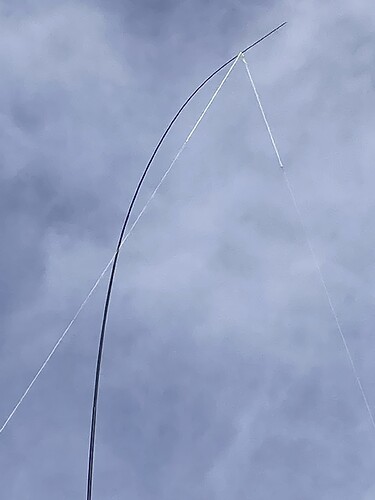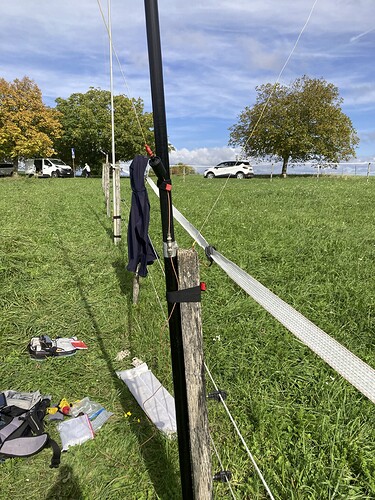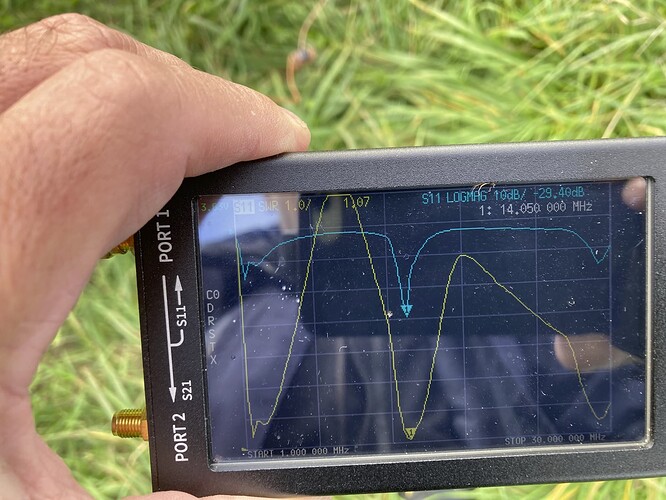Of course I love DX … and best of all as S2S … and what is the best way to do that? … with a beam, of course.
But which beam should you drag to the summit?
The requirements are clear: you have to be able to set it up easily and quickly on your own. It must weigh almost nothing, must not be bulky and must be able to hang on the mini mast from dx-wire, which I always have with me.
That doesn’t leave much choice.
If you browse the www, you’ll eventually come across reports about VDA.
Classically, the radiator of a VDA is fed in as a dipole. Since I want to keep the mechanical effort as low as possible for SOTA, I thought it must also work with endfed. When I searched the www, my suspicions were confirmed. So I built another 1:49 balun and cut the wire to length for a 20m radiator.
The length of the reflector and all other dimensions were quickly found.
It was clear that I didn’t want to have a horizontal bar to spread the wires. That’s why I pulled them apart with strings that I fastened to the ground with tent pegs. (I would have fixed the distance with a string in the middle of the element).
So banana plug - radiator - cut string for the distance over the top of the mast to the reflector and then a string to hold the reflector. Then 2 tension lines.
This way the whole antenna consists of 3 bundles + balun and coax.
After I had prepared everything, today was the day of truth. I quickly realised that the mini mast from DX-Wire was too small. I couldn’t attach anything to the top, then everything bent too much and the wires of the elements lay on the ground. It was too short for deeper mounting.
Fortunately, I still have a mast with 12.5m. It also bent, but it was high enough.
.
In the background the mini mast with the endfed (for 40, 20, 15 + 10m) which I have set up as a comparison antenna.
.
Super SWR
Now it was time to compare the antenna. If you build something like that, it has to be worth it.
As a comparison antenna, I set up my Endfed, which is resonant on 40, 20, 15 and 10m. Its wire was fed just above the ground and then goes up the mast and in about 8m diagonally down to about 1m above the ground.
In general, I am less interested in theoretical values than in practical results. I want to hear it.
I stood between the antennas with the KX2 and kept changing the BNC connector.
I quickly noticed that the VDA was clearly directional. Stations that did not come from the main direction were more audible in the endfed. This was clearly noticeable!
The VDA was oriented towards the USA. There are always loud stations there in the afternoon. I was also lucky and was able to listen to a morning round, which must have been from different US states. Unfortunately they never said their call signs…
Here I could hear a very slight tendency towards the advantage of VDA over Endfed.
And now? Is it worth it?
In my opinion, no. Of course, at an VK or NA-EU-S2S party you can set up the antenna in the appropriate direction. You could even turn it - you just have to move the tent pegs. But I don’t think it’s worth the effort. The gain is too weak for that. Besides, you get the disadvantage of receiving much weaker signals in other directions!
73 Armin
